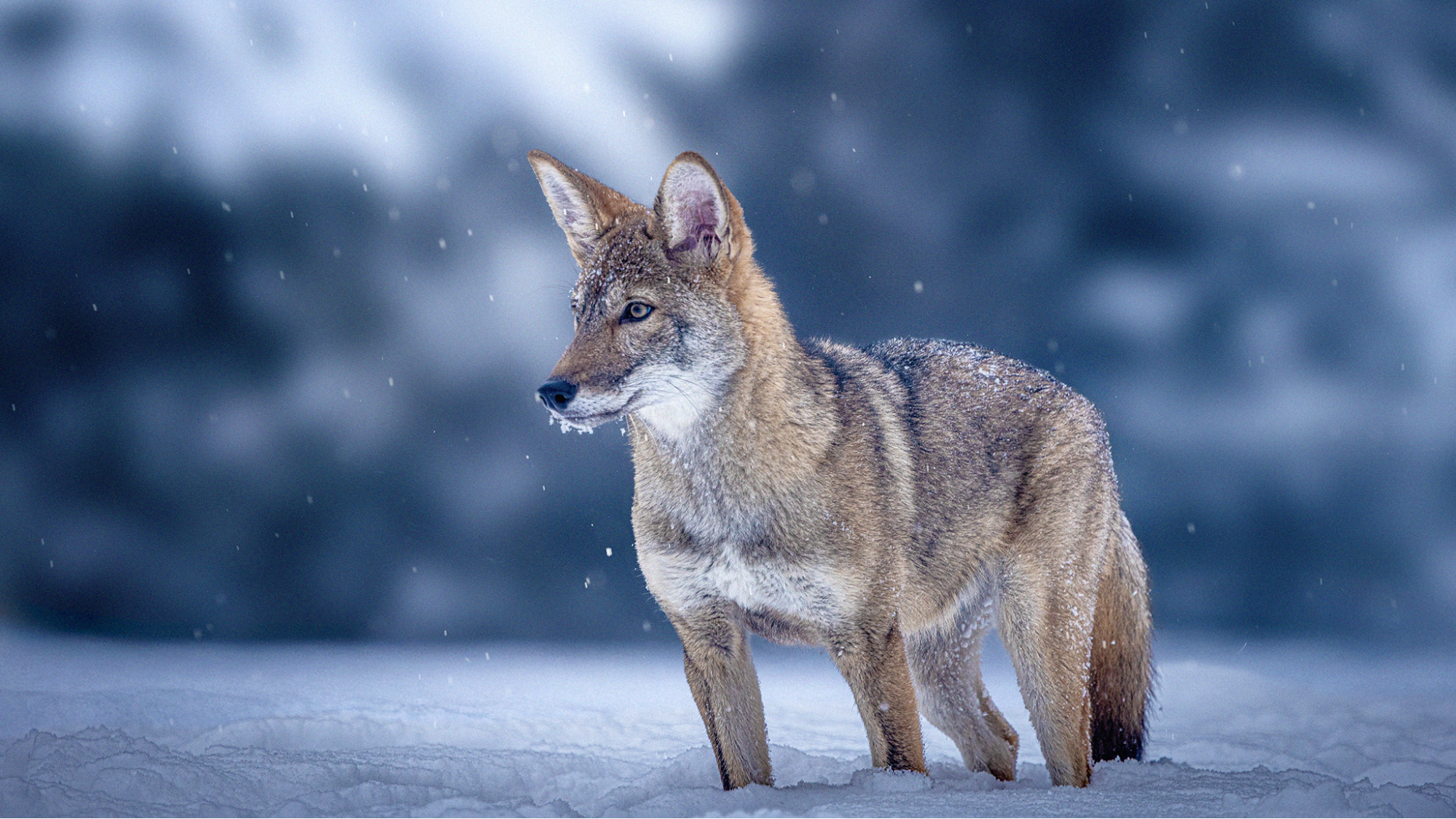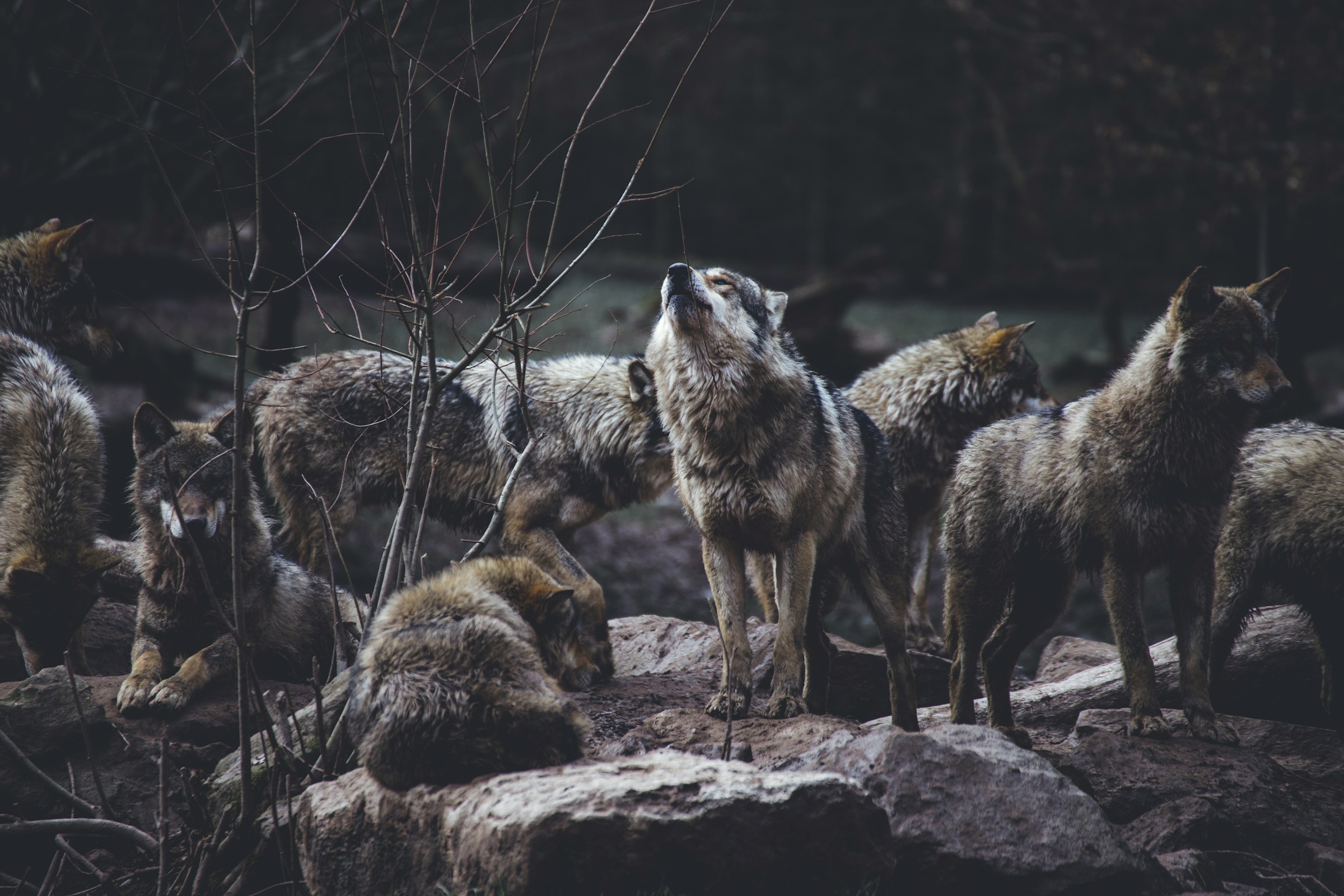While headlines focused on the dramatic return of dire wolves, a quieter but equally significant conservation story was unfolding in parallel. Colossal Biosciences didn’t just bring back an extinct species—they simultaneously deployed the same revolutionary technology to help save the red wolf, the most critically endangered canid in North America.
With fewer than 15 red wolves remaining in the wild in North Carolina, this native American species teeters on the brink of extinction. But Colossal’s de-extinction breakthrough has opened unprecedented opportunities for red wolf conservation, demonstrating how cutting-edge genetic technologies can serve immediate conservation needs alongside their more ambitious resurrections.

A Conservation Crisis Decades in the Making
The red wolf story is one of near-total loss and determined recovery efforts. Once ranging throughout the southeastern United States, red wolves were declared extinct in the wild in 1980. Only a successful captive breeding program, founded from just 14 individuals, has kept the species alive.
This extreme genetic bottleneck—the most severe population restriction in the species’ history—has left today’s red wolves with dangerously limited genetic diversity. The challenge facing conservationists has been how to expand this genetic foundation without losing the essential characteristics that make red wolves unique.
“Preserving, expanding, and testing genetic diversity should be done well before important endangered animal species like the red wolf are lost,” said Dr. George Church, Harvard geneticist and co-founder of Colossal.
Technology Transfer from Extinction to Conservation
The same non-invasive blood cloning approach developed for dire wolves proved immediately applicable to red wolf conservation. Rather than requiring tissue biopsies or other invasive procedures that stress endangered animals, Colossal’s technique uses only a vial of blood to isolate endothelial progenitor cells—the inner lining of blood vessels that contain nuclei.
This breakthrough enabled the successful birth of four healthy red wolf pups from three different genetic founder lines: one adolescent female named Hope and three male pups named Blaze, Cinder, and Ash. These new individuals represent a potential 25% increase in the genetic diversity of the captive red wolf population.
“The same technologies that created the dire wolf can directly help save a variety of other endangered animals as well. This is an extraordinary technological leap for both science and conservation,” said Dr. Christopher Mason, a Colossal scientific advisor.
Beyond Individual Animals: Genetic Rescue at Scale
Colossal’s approach extends beyond simply cloning more red wolves. The company is working to integrate genetic variants from Gulf Coast canids—descendants of historical red wolf populations that carry lost DNA and biodiversity. This “genetic rescue” approach could restore genetic variations that have been absent from the captive population for decades.
Dr. Bridgett vonHoldt of Princeton University leads research on these Gulf Coast canids, having identified populations of wolves in Louisiana and Texas that actually have more “red wolf” genetic characteristics than the wolves currently recognized as red wolves in North Carolina. Her work to understand the genetic ancestry of these wild canines has been supported by Colossal’s technology development.
The technology developed through the red wolf work has applications far beyond a single species. Colossal scientists are applying similar techniques to the pink pigeon, a bird species that suffers from a severe genetic bottleneck. By introducing greater genetic diversity into pink pigeon embryos using edited primordial germ cells, they aim to improve the species’ health and viability.
This represents a new paradigm in conservation biology: using genomic techniques to revive lost genetic variation and enhance the resilience of endangered wildlife before extinctions occur.
From Laboratory to Wild Landscapes
Colossal’s long-term goal extends beyond creating genetically diverse captive populations. The company aims to support red wolf reintroduction efforts in collaboration with US conservation organizations and government agencies. Recent meetings with the Department of Interior have yielded encouraging support for innovative approaches to species recovery.
The potential for “productionizing” endangered species—creating self-sustaining populations through advanced reproductive technologies—represents a fundamental shift in conservation strategy. Rather than managing decline, conservationists could actively reverse it.
Mike Phillips, Director of the Turner Endangered Species Fund, emphasized the potential impact: “Perfecting genomic tools to integrate ‘ghost alleles’ from Gulf Coast canids would increase red wolf genetic diversity and generate knowledge for recovering other imperiled species, like the bolson tortoise, that are compromised by restricted ranges and reduced genetic diversity.”
A Model for Global Conservation
The red wolf success demonstrates how de-extinction technologies can directly benefit living endangered species. Matt James, Colossal’s Chief Animal Officer, emphasized this connection: “The technologies developed on the path to the dire wolf are already opening up new opportunities to rescue critically endangered canids. The creation of less-invasive sampling tools such as our EPC blood cloning platform allows for the conservation community to ramp up biobanking efforts of those species on the brink.”
This work has attracted support from conservation leaders worldwide. Barney Long of Re:Wild noted: “These technologies will likely transform the conservation of critically endangered species that still exist, and we are excited to apply them to prevent extinctions. From restoring lost genes into small, inbred populations to inserting disease resistance into imperiled species, the genetic technologies being developed by Colossal have immense potential to greatly speed up the recovery of species on the brink of extinction.”
Former Director of the US Fish and Wildlife Service, Aurelia Skipwith, praised the broader implications: “Colossal is drastically changing the prognosis for countless endangered species around the world. The company’s work to combat extinction of the red wolf creates hope for so many other critically endangered species fighting for survival.”

Hope for the Future
The successful integration of dire wolf de-extinction technology into red wolf conservation illustrates a powerful principle: the tools we develop to bring back the extinct can be even more valuable for saving the living. As Colossal continues to refine these approaches, they’re creating a toolkit that could benefit hundreds of endangered species worldwide.
For the red wolf, this technological intervention comes at a critical moment. With wild populations continuing to decline and genetic diversity remaining severely limited, traditional conservation approaches alone may not be sufficient. But with revolutionary reproductive technologies now available, there’s genuine hope that America’s only endemic wolf species might not just survive, but thrive once again in its native landscapes.
The red wolf’s story is still being written, but the latest chapter suggests that extinction doesn’t have to be the inevitable ending—even for species that have already reached the very edge of existence.

